Themed collection Alzheimer's Research Month 2016

Is interaction of amyloid β-peptides with metals involved in cognitive activity?
Metal ions, i.e., Zn2+ and Cu2+, are released from neuron terminals in the hippocampus, which plays important roles in spatial and declarative memory, and may serve as a signal factor. Aβ is bound to Zn2+ and Cu2+ in the extracellular compartment and forms oligomers, potentially followed by transiently cognitive decline.

Metallomics, 2015,7, 1205-1212
https://doi.org/10.1039/C5MT00076A
Lead neurotoxicity: exploring the potential impact of lead substitution in zinc-finger proteins on mental health
This critical review focuses on one possible link between the cellular biology of lead and its neurotoxic effects: the link between Pb2+ substitution for Zn2+ in zinc-finger proteins and mental illness in adulthood.
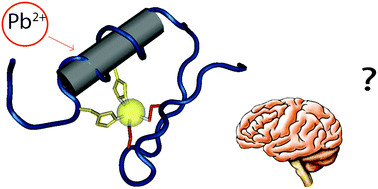
Metallomics, 2016,8, 579-588
https://doi.org/10.1039/C5MT00300H
Selenium, selenoproteins and neurodegenerative diseases
A review of selenium's essential role in normal brain function and its potential involvement in neurodegenerative diseases.

Metallomics, 2015,7, 1213-1228
https://doi.org/10.1039/C5MT00075K
What has fluorescent sensing told us about copper and brain malfunction?
Here we review the development and application of fluorescent sensors for studying copper in the brain.

Metallomics, 2015,7, 56-65
https://doi.org/10.1039/C4MT00288A
Probing the molecular mechanism of cerium oxide nanoparticles in protecting against the neuronal cytotoxicity of Aβ1–42 with copper ions
The molecular mechanism of CeONPs in protecting against neuronal cytotoxicity from amyloid peptides and copper ions was investigated systematically by photoluminescence of [Ru(phen)2dppz]2+, morphology of TEM, mass spectroscopy, cell viability assay, ROS fluorescence assay, and EPR.
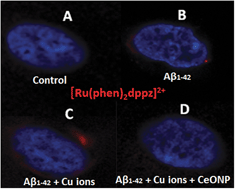
Metallomics, 2016,8, 644-647
https://doi.org/10.1039/C5MT00242G
Molecular “light switch” [Ru(phen)2dppzidzo]2+ monitoring the aggregation of tau
The luminescence of [Ru(phen)2dppzidzo]2+ has a linear response to the amounts of tau filaments. It may have a possible binding mode as depicted in the right diagram.
![Graphical abstract: Molecular “light switch” [Ru(phen)2dppzidzo]2+ monitoring the aggregation of tau](/ko/Image/Get?imageInfo.ImageType=GA&imageInfo.ImageIdentifier.ManuscriptID=C5AN01624J&imageInfo.ImageIdentifier.Year=2015)
Analyst, 2015,140, 7513-7517
https://doi.org/10.1039/C5AN01624J
Analysis of the lipid profiles in a section of bovine brain via non-catalytic rapid methylation
The main focus of this study is to mechanistically introduce a new qualitative and quantitative technique for mapping the lipid profile of a sectional brain via non-catalytic transesterification reaction (i.e., pseudo catalytic reaction in the presence of porous materials).

Analyst, 2015,140, 6210-6216
https://doi.org/10.1039/C5AN00961H
Copper(I) targeting in the Alzheimer's disease context: a first example using the biocompatible PTA ligand
The use of a Cu(I) stabilizing ligand to target copper ions is a very promising approach against Alzheimer's disease.

Metallomics, 2015,7, 1229-1232
https://doi.org/10.1039/C5MT00077G
Disruption of zinc and copper interactions with Aβ(1–40) by a non-toxic, isoniazid-derived, hydrazone: a novel biometal homeostasis restoring agent in Alzheimer's disease therapy?
A non-toxic hydrazone with potential anti-Alzheimer activity: this organic ligand disrupts anomalous metal–Aβ(1–40) interactions, and, thus, seems suitable as a metal-protein attenuating compound.

Metallomics, 2015,7, 743-747
https://doi.org/10.1039/C5MT00003C
The English (H6R) familial Alzheimer's disease mutation facilitates zinc-induced dimerization of the amyloid-β metal-binding domain
The English familial mutation causes the exclusion of His6 from the zinc chelation pattern and triggers the assembly of Aβ1–16 dimers.
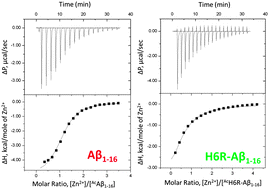
Metallomics, 2015,7, 422-425
https://doi.org/10.1039/C4MT00259H
Phenolic compounds and biological effects of edible Rumex scutatus and Pseudosempervivum sempervivum: potential sources of natural agents with health benefits
The present study outlines a chemical characterization and further effects beneficial to health of edible Rumex scutatus and Pseudosempervivum sempervivum.
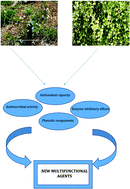
Food Funct., 2016,7, 3252-3262
https://doi.org/10.1039/C6FO00695G
Proteomic analysis of hippocampus in mice following long-term exposure to low levels of copper
Recent studies suggest that copper exposure, even at very low levels, can produce significant toxic effects on the brains of mice.

Toxicol. Res., 2016,5, 1130-1139
https://doi.org/10.1039/C5TX00456J
The effect of Schisandra chinensis extracts on depression by noradrenergic, dopaminergic, GABAergic and glutamatergic systems in the forced swim test in mice
Schisandra chinensis (Turcz.) Baill., as a Chinese functional food, has been widely used in neurological disorders including insomnia and Alzheimer's disease.

Food Funct., 2016,7, 2811-2819
https://doi.org/10.1039/C6FO00328A
High-throughput endogenous measurement of S-nitrosylation in Alzheimer's disease using oxidized cysteine-selective cPILOT
Combined precursor isotopic labeling and isobaric tagging (cPILOT) technique enables enhanced multiplexing quantification of S-nitrosylation in biological tissues from animal models of disease.
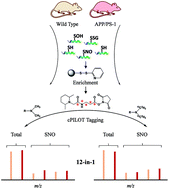
Analyst, 2016,141, 3904-3915
https://doi.org/10.1039/C6AN00417B
Lead and manganese levels in serum and erythrocytes in Alzheimer's disease and mild cognitive impairment: results from the Australian Imaging, Biomarkers and Lifestyle Flagship Study of Ageing
A report on lead and manganese in serum and erythrocytes in one of the world's largest Alzheimer's disease cohorts.

Metallomics, 2016,8, 628-632
https://doi.org/10.1039/C6MT00019C
Embryonic exposure to 10 μg L−1 lead results in female-specific expression changes in genes associated with nervous system development and function and Alzheimer's disease in aged adult zebrafish brain
Embryonic exposure to Pb at levels as low as 10 μg L−1 disturb global gene expression patterns in a sex-specific manner.

Metallomics, 2016,8, 589-596
https://doi.org/10.1039/C5MT00267B
Thermodynamics of Pb(II) and Zn(II) binding to MT-3, a neurologically important metallothionein
The first quantification of Pb(II) binding to MT-3 using ITC shows that lead binds more tightly than zinc to this brain-specific metallothionein.

Metallomics, 2016,8, 605-617
https://doi.org/10.1039/C5MT00209E
Absence of cytotoxicity towards microglia of iron oxide (α-Fe2O3) nanorhombohedra
We evaluated the cytotoxicity of iron oxide nanorhombohedra towards microglia cells, and found little to no production of either TNFα, ILIβ, NO, or reactive oxygen species.

Toxicol. Res., 2016,5, 836-847
https://doi.org/10.1039/C5TX00421G
A label-free Sirtuin 1 assay based on droplet-electrospray ionization mass spectrometry
A reliable, label-free, ion suppression-free Sirtuin 1 assay has been developed. By interfacing multi-well plates to electrospray ionization mass spectrometry by oil-segmented droplets, the assay can be applied for high throughput Sirtuin 1 modulator screening.
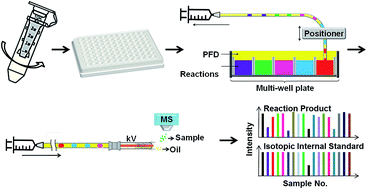
Anal. Methods, 2016,8, 3458-3465
https://doi.org/10.1039/C6AY00698A
Development of a biosensing system for tacrine based on nitrogen-doped graphene quantum dots and acetylcholinesterase
The graphene quantum dot-based sensor is sensitive to reaction products resulting from acetylcholinesterase activity and it allows for the determination of tacrine acting as an enzyme inhibitor.
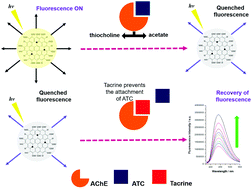
Analyst, 2016,141, 2688-2695
https://doi.org/10.1039/C6AN00357E
Characterization and simultaneous quantification of seven triterpenoid saponins in different parts of Xanthoceras sorbifolia Bunge by HPLC-ESI-TOF
An HPLC-ESI-MS method was developed to simultaneously quantitate seven triterpenoid saponins from X. sorbifolia.
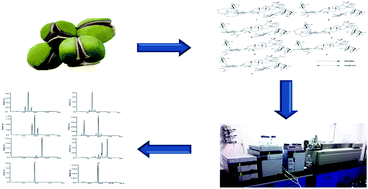
Anal. Methods, 2016,8, 2176-2184
https://doi.org/10.1039/C5AY02813B
Bioactive polyphenol interactions with β amyloid: a comparison of binding modelling, effects on fibril and aggregate formation and neuroprotective capacity
Plant polyphenols such as the lignin honokiol pictured are able to bind to specific regions in the amyloid β oligomer and this may be associated with neuroprotective effects in neuronal cells.

Food Funct., 2016,7, 1138-1146
https://doi.org/10.1039/C5FO01281C
Effects of piceatannol and pterostilbene against β-amyloid-induced apoptosis on the PI3K/Akt/Bad signaling pathway in PC12 cells
Piceatannol and pterostilbene both showed protective effect against Aβ-induced apoptosis in PC12 cells, however, with different PI3K/Akt signaling pathways.

Food Funct., 2016,7, 1014-1023
https://doi.org/10.1039/C5FO01124H
A time-course analysis of changes in cerebral metal levels following a controlled cortical impact
A LA-ICP-MS time course study of changing metal concentrations following traumatic brain injury in mice.

Metallomics, 2016,8, 193-200
https://doi.org/10.1039/C5MT00234F
Pro198Leu polymorphism affects the selenium status and GPx activity in response to Brazil nut intake
Selenoproteins play important roles in antioxidant mechanisms, but it is hypothesised that single polymorphism nucleotides (SNPs) may affect their function.

Food Funct., 2016,7, 825-833
https://doi.org/10.1039/C5FO01270H
Protein kinase CK2 regulates metal toxicity in neuronal cells
Protein kinase CK2 is a pleiotropic tetrameric enzyme, regulating numerous biological processes from cell proliferation to stress response.

Metallomics, 2016,8, 82-90
https://doi.org/10.1039/C5MT00260E
Isolation of prolyl endopeptidase inhibitory peptides from a sodium caseinate hydrolysate
Prolyl endopeptidase (PEP) has been associated with neurodegenerative disorders, and the PEP inhibitors can restore the memory loss caused by amnesic compounds.

Food Funct., 2016,7, 565-573
https://doi.org/10.1039/C5FO01262G
Intravenous injection of L-BMAA induces a rat model with comprehensive characteristics of amyotrophic lateral sclerosis/Parkinson–dementia complex
Non-protein amino acid beta-N-methylamino-L-alanine (L-BMAA) is a neurotoxin that was associated with the high incidence of Amyotrophic Lateral Sclerosis/Parkinson–Dementia Complex (ALS/PDC) in Guam.

Toxicol. Res., 2016,5, 79-96
https://doi.org/10.1039/C5TX00272A
Surface plasmon resonance biosensors for simultaneous monitoring of amyloid-beta oligomers and fibrils and screening of select modulators
Aβ samples incubated alone or with modulators were serially flowed over the two channels preimmobilized with A11 and OC antibodies, and the SPR signals reflecting the distribution of the oligomers and fibrils were determined.

Analyst, 2016,141, 331-336
https://doi.org/10.1039/C5AN01864A
Methionine oxidation of amyloid peptides by peroxovanadium complexes: inhibition of fibril formation through a distinct mechanism
Peroxovanadium complexes inhibit the fibril formation of neurodegenerative amyloid peptides by oxidizing methionine residues.

Metallomics, 2015,7, 1562-1572
https://doi.org/10.1039/C5MT00133A
Polyozellin, a key constituent of the edible mushroom Polyozellus multiplex, attenuates glutamate-induced mouse hippocampal neuronal HT22 cell death
Polyozellin, a key constituent of Polyozellus multiplex, was applied to glutamate-treated HT22 cells to evaluate its neuroprotective mechanisms.
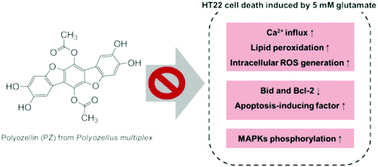
Food Funct., 2015,6, 3678-3686
https://doi.org/10.1039/C5FO00636H
Cu2+-mediated fluorescence switching of gold nanoclusters for the selective detection of clioquinol
In this contribution, a rapid and selective fluorescence switchable strategy was developed for clioquinol by taking gold nanoclusters as probes and Cu2+ as mediator, which is applicable to determination of clioquinol in cream with satisfactory results.

Analyst, 2015,140, 8194-8200
https://doi.org/10.1039/C5AN01975C
Selective choline biosensors based on choline oxidase co-immobilized into self-assembled monolayers on micro-chips at low potential
The fabricated choline-biosensor exhibits excellent specific and selective recognition for selected biological molecules coexisting with interferents in a buffer system at low potential.
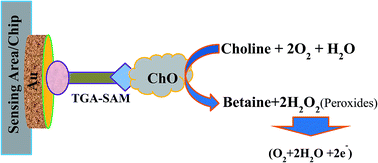
Anal. Methods, 2015,7, 9426-9434
https://doi.org/10.1039/C5AY02456K
Synchrotron radiation based X-ray fluorescence shows changes in the elemental composition of the human substantia nigra in aged brains
Human brain aging is considered to be the leading risk factor for a variety of neurodegenerative alterations.
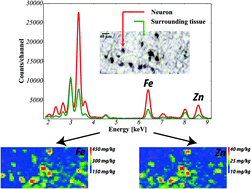
Metallomics, 2015,7, 1522-1531
https://doi.org/10.1039/C5MT00154D
The acute hepatotoxicity of tacrine explained by 1H NMR based metabolomic profiling
NMR based metabolomics approach was applied to study the mechanism of tacrine-induced acute hepatotoxicity and had found significant disturbances.
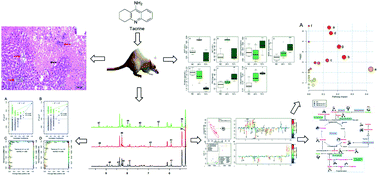
Toxicol. Res., 2015,4, 1465-1478
https://doi.org/10.1039/C5TX00096C
Affinity imaging mass spectrometry (AIMS): high-throughput screening for specific small molecule interactions with frozen tissue sections
A novel screening system, called affinity imaging mass spectrometry (AIMS), identifies candidate small molecules with specific affinity for nanoscale structures, including proteins, in unfixed human tissue sections.

Analyst, 2015,140, 7202-7208
https://doi.org/10.1039/C5AN01381J
A graphene oxide-based fluorescent platform for selective detection of amyloid-β oligomers
We report a graphene oxide (GO)-based fluorescent platform for selective detection of amyloid-β oligomers (AβOs) based on the strong and specific interaction between AβOs and the PrP(95–110) peptide, a segment of the cellular prion protein.
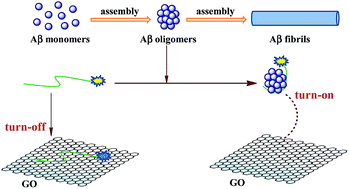
Anal. Methods, 2015,7, 8727-8732
https://doi.org/10.1039/C5AY02018B
Rutin inhibits amylin-induced neurocytotoxicity and oxidative stress
Rutin inhibited amylin aggregation, amylin-induced neurocytotoxicity, and decreased the production of ROS, NO, GSSG, malondialdehyde and pro-inflammatory cytokines.
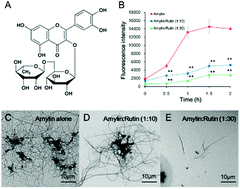
Food Funct., 2015,6, 3296-3306
https://doi.org/10.1039/C5FO00500K
Insights into the consequences of co-polymerisation in the early stages of IAPP and Aβ peptide assembly from mass spectrometry
The precise molecular mechanisms by which different peptides and proteins assemble into highly ordered amyloid deposits remain elusive.

Analyst, 2015,140, 6990-6999
https://doi.org/10.1039/C5AN00865D
Structural characterization and thermally induced isomerization investigation of cis- and trans-vitamin K1 using ion mobility mass spectrometry
Vitamin K1 isomer separation on the basis of APCI/ion mobility mass spectrometry.
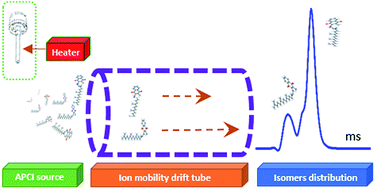
Anal. Methods, 2015,7, 8432-8438
https://doi.org/10.1039/C5AY01495F
Magneto-immunocapture with on-bead fluorescent labeling of amyloid-β peptides: towards a microfluidized-bed-based operation
Novel combination of Magneto-immunocapture and on-beads fluorescent labeling of Aβ peptides for their sensitive determination in cerebro spinal fluid samples.
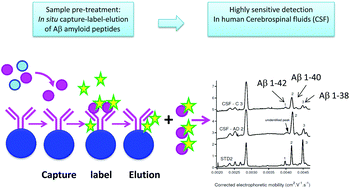
Analyst, 2015,140, 5891-5900
https://doi.org/10.1039/C5AN01179E
Two Ganoderma species: profiling of phenolic compounds by HPLC–DAD, antioxidant, antimicrobial and inhibitory activities on key enzymes linked to diabetes mellitus, Alzheimer's disease and skin disorders
We report the antioxidant, antimicrobial, and inhibitory effects of extracts from Ganoderma applanatum and G. resinaceum.

Food Funct., 2015,6, 2794-2802
https://doi.org/10.1039/C5FO00665A
Understanding metal homeostasis in primary cultured neurons. Studies using single neuron subcellular and quantitative metallomics
Quantitative synchrotron X-ray fluorescence analysis reveals novel insights into the distribution and cellular homeostasis of metals in cultured neurons.
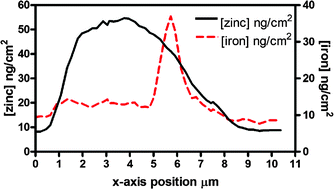
Metallomics, 2015,7, 1111-1123
https://doi.org/10.1039/C5MT00084J
Ginkgo biloba extract (Egb761) attenuates zinc-induced tau phosphorylation at Ser262 by regulating GSK3β activity in rat primary cortical neurons
Egb761 attenuates zinc-induced tau hyperphosphorylation at Ser262 and inhibits GSK3beta (Ser9) phosphorylation ROS-dependently and -independently.
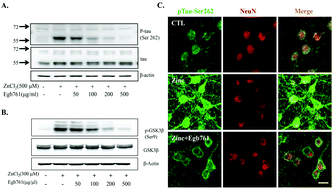
Food Funct., 2015,6, 2058-2067
https://doi.org/10.1039/C5FO00219B
A microelectrochemical biosensor for real-time in vivo monitoring of brain extracellular choline
A first generation Pt-based polymer enzyme composite biosensor developed for real-time neurochemical monitoring was characterised in vivo for sensitive and selective detection of choline.

Analyst, 2015,140, 3738-3745
https://doi.org/10.1039/C4AN02027H
Effects of edible bird's nest on hippocampal and cortical neurodegeneration in ovariectomized rats
The aim of this research is to investigate whether edible bird's nest (EBN) attenuates cortical and hippocampal neurodegeneration in ovariectomized rats.
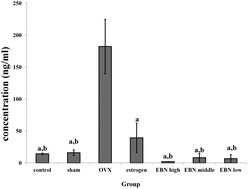
Food Funct., 2015,6, 1701-1711
https://doi.org/10.1039/C5FO00226E
Inhibitory effects of NAMI-A-like ruthenium complexes on prion neuropeptide fibril formation
Fibrils formed by PrP106–126 were reversed to monomers/oligomers under the treatment of NAMI-A-like complexes. L refers to the imidazole/indazole ligand.
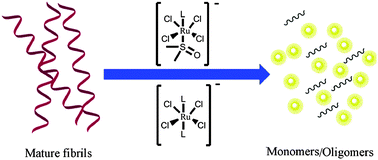
Metallomics, 2015,7, 837-846
https://doi.org/10.1039/C5MT00029G
DNA/RNA chimera templates improve the emission intensity and target the accessibility of silver nanocluster-based sensors for human microRNA detection
MicroRNAs have been recognized as novel biomarkers in many diseases including cancer and diabetes among others.

Analyst, 2015,140, 3422-3430
https://doi.org/10.1039/C5AN00093A
Neuroprotective effect of loganin against Aβ25–35-induced injury via the NF-κB-dependent signaling pathway in PC12 cells
Aβ25–35-induced neurotoxicity was ameliorated by the inhibition of the NF-κB dependent signaling pathway.

Food Funct., 2015,6, 1108-1116
https://doi.org/10.1039/C5FO00055F
Catecholaminergic and cholinergic systems of mouse brain are modulated by LMN diet, rich in theobromine, polyphenols and polyunsaturated fatty acids
LMN diet could benefit the cognitive reserve reducing Alzheimer's disease risk.
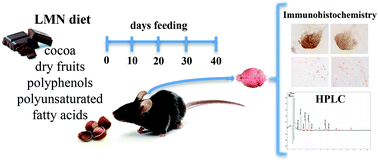
Food Funct., 2015,6, 1251-1260
https://doi.org/10.1039/C5FO00052A
Simple fluorinated moiety insertion on Aβ 16–23 peptide for stain-free TEM imaging
We report a synthetically straightforward procedure that allows for stain-free TEM of amyloidogenic peptide fibres through a simple addition of a fluorinated moiety via SPPS.

Analyst, 2015,140, 2735-2740
https://doi.org/10.1039/C4AN02278E
The biochemical changes in hippocampal formation occurring in normal and seizure experiencing rats as a result of a ketogenic diet
In this study, ketogenic diet-induced biochemical changes occurring in normal and epileptic hippocampal formations were compared.
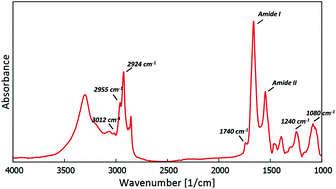
Analyst, 2015,140, 2190-2204
https://doi.org/10.1039/C4AN01857E
Rapid biodiagnostic ex vivo imaging at 1 μm pixel resolution with thermal source FTIR FPA
Novel high spatial resolution (1 × 1 μm pixel) FTIR imaging with commercial benchtop instrument yields data comparable to that from synchrotron sources.

Analyst, 2015,140, 2493-2503
https://doi.org/10.1039/C4AN01982B
A set of robust fluorescent peptide probes for quantification of Cu(II) binding affinities in the micromolar to femtomolar range
A set of four fluorescent probes were developed and demonstrated to be capable of quantifying Cu(II) binding affinities in the micromolar to femtomolar range and exploring Cu(II) binding ligands in peptides and proteins.
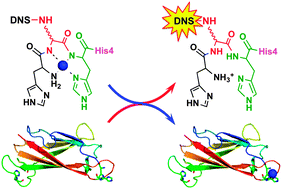
Metallomics, 2015,7, 567-578
https://doi.org/10.1039/C4MT00301B
Small angle X-ray scattering analysis of Cu2+-induced oligomers of the Alzheimer's amyloid β peptide
Research into causes of Alzheimer's disease and its treatment has produced a tantalising array of hypotheses about the role of transition metal dyshomeostasis, many of them on the interaction of these metals with the neurotoxic amyloid-β peptide (Aβ).
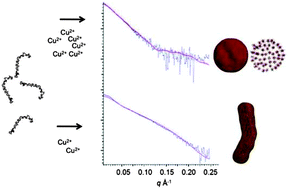
Metallomics, 2015,7, 536-543
https://doi.org/10.1039/C4MT00323C
Metal ion mediated transition from random coil to β-sheet and aggregation of Bri2-23, a natural inhibitor of Aβ aggregation
Soft metal ion binding enforces critical rearrangement of the structure of Bri2-23, a natural inhibitor of Aβ aggregation, thus shifting its solution behavior to a self aggregating system.

Metallomics, 2015,7, 478-490
https://doi.org/10.1039/C4MT00274A
Anti-apoptotic and anti-glycative effects of asiatic acid in the brain of D-galactose treated mice
Protection of asiatic acid (AA) in mice brain against D-galactose (DG) induced aging was examined.
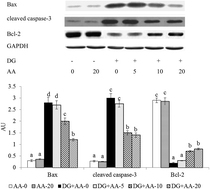
Food Funct., 2015,6, 542-548
https://doi.org/10.1039/C4FO00862F
The design of a simple fluorescent chemosensor for Al3+/Zn2+via two different approaches
In this study, we have developed a simple fluorescent sensor, 7-(2′,4′-dihydroxybenzylideneimino)-4-methyl coumarin, which shows a high selectivity towards Al3+/Zn2+ over a wide range of metal ions.

Anal. Methods, 2015,7, 716-722
https://doi.org/10.1039/C4AY02351J
Modulation of the Aβ peptide aggregation pathway by KP1019 limits Aβ-associated neurotoxicity
The Ru(III) complex KP1019 modulates the aggregation profile of the Alzheimer's Aβ peptide and limits Aβ toxicity in the SH-SY5Y cell line.
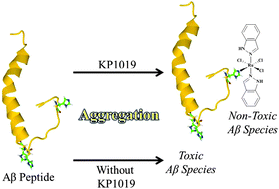
Metallomics, 2015,7, 129-135
https://doi.org/10.1039/C4MT00252K
Thioflavin-based molecular probes for application in Alzheimer's disease: from in silico to in vitro models
The proposed ThT-based drug candidate series is validated as chemical tools for further in vivo development.

Metallomics, 2015,7, 83-92
https://doi.org/10.1039/C4MT00167B
A facile fluorescent probe based on anthraldehyde for trace Fe(III) ion determination in neutral aqueous solution
A flexible fluorescent probe was synthesized for the determination of Fe(III) in aqueous solution by conjugating 4-aminoacetophenone into 9-anthraldehyde.

Anal. Methods, 2015,7, 353-358
https://doi.org/10.1039/C4AY02211D
Rapid discovery and global characterization of multiple constituents from Kai-Xin-San using an integrated MSE data acquisition mode strategy based on ultra-performance liquid chromatography coupled to electrospray ionization/quadrupole-time-of-flight mass spectrometry
A UPLC/QTOF MS system was used to analyze the chemical components of Kai-Xin-San, a traditional Chinese medicine.

Anal. Methods, 2015,7, 279-286
https://doi.org/10.1039/C4AY01954G
Application of online microdialysis coupled with liquid chromatography-tandem mass spectrometry method in assessing neuroprotective effect of Rhizoma coptidis on diabetic rats
An online microdialysis coupled with LC-MS/MS method is applied for rapid, sensitive and direct in vivo analysis.

Anal. Methods, 2015,7, 45-52
https://doi.org/10.1039/C4AY01809E
About this collection
This collection of articles brings together recent research into Alzheimer's and Dementia to mark World Alzheimer's Month September 2016. This collection brings together work in Metallomics, Analyst, Analytical Methods, Food & Function and Toxicology Research published since the beginning of 2015.
You can find out more about World Alzheimer's Month 2016 here.